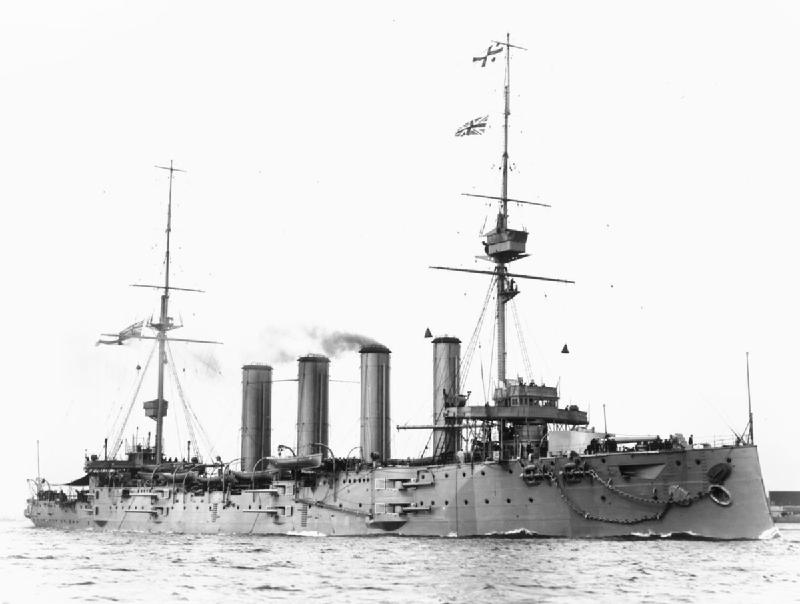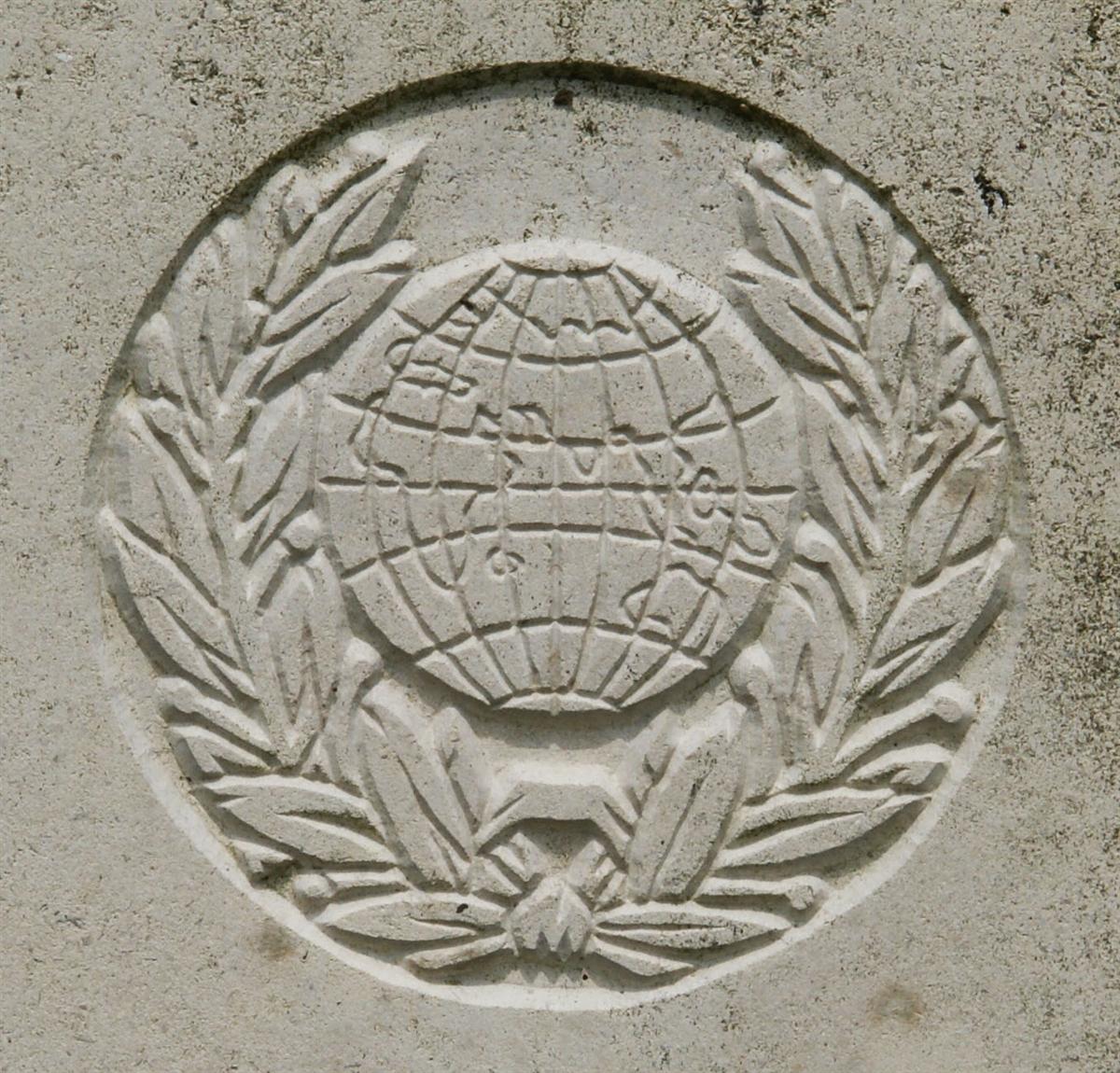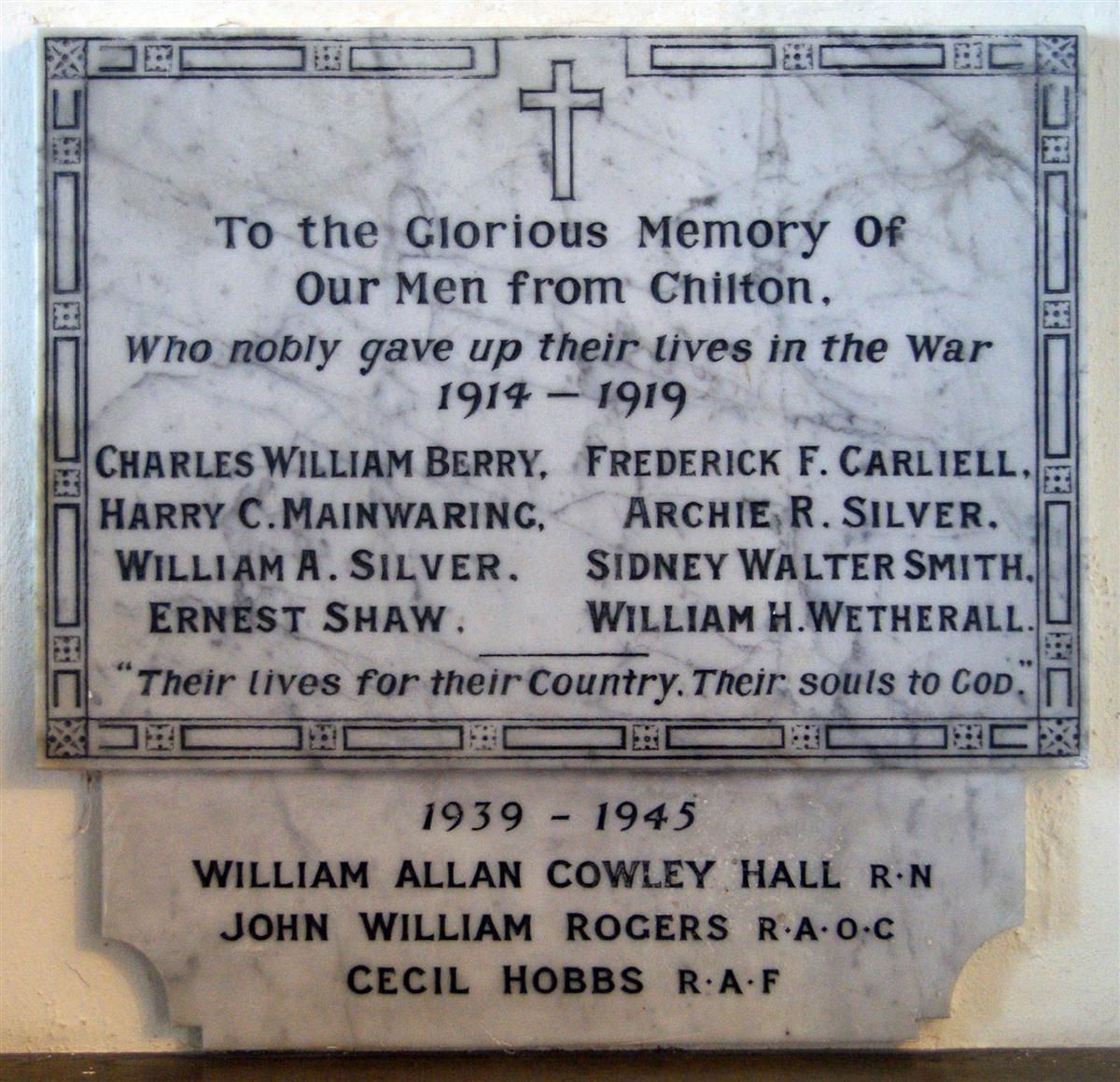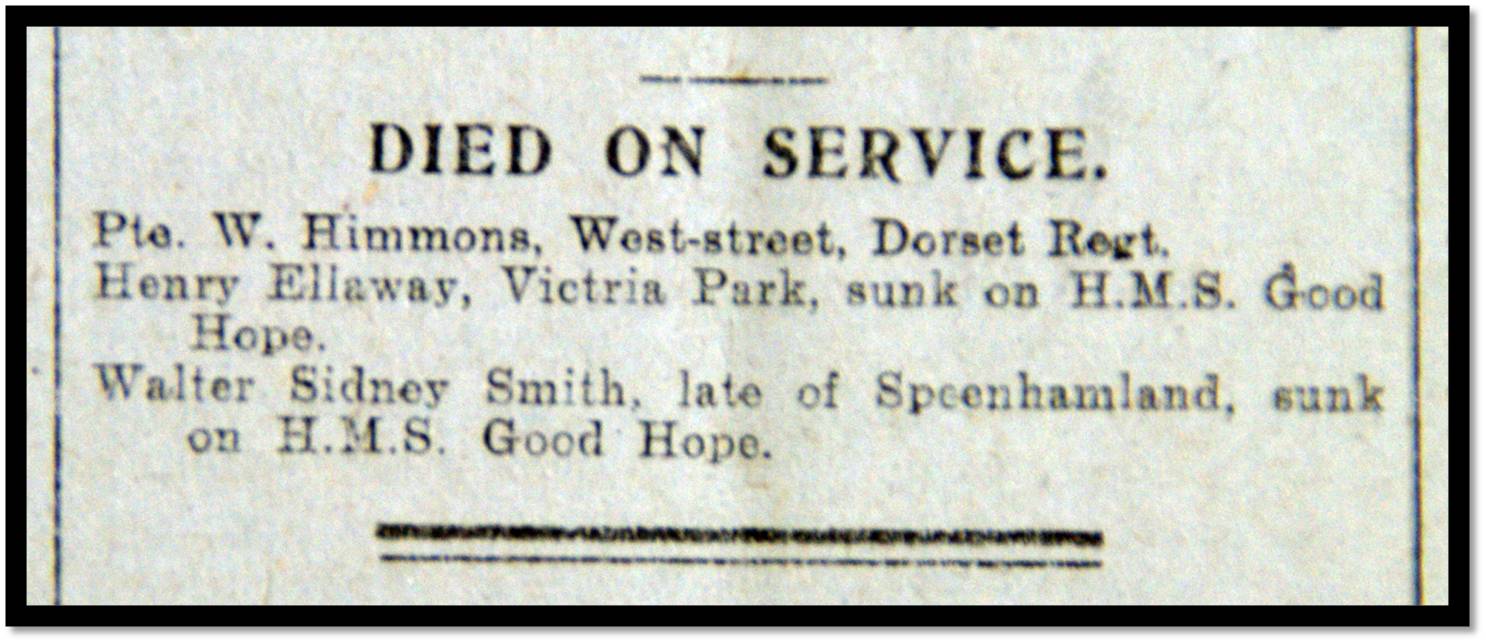Walter Sydney Smith
Private PO/14879 Walter Sydney Smith, Royal Marine Light Infantry
Sydney (as he was normally known) was born on the 7th February, 1890 at Compton, Berkshire, the youngest child of Morris Smith and his wife Elizabeth née Shilton. His elder siblings were Nellie B (born 1883), Morris (1885) and Albert William (1887). Their father was a wheelwright, originally from Highclere, who had found employment in Compton. At some date before 1901 the family moved to 2 Essex Place, Speen, and Walter attended Speenhamland School in Newbury.
On 2 July 1907 Sydney, aged 17, joined the Royal Marines, going through his basic training at Walmer Barracks in Deal, Kent. By this time his parents had moved again, this time to Chilton near Didcot.

HMS Good Hope |
When war broke out in 1914 he was serving on HMS Good Hope, an obsolete armoured cruiser that had been mothballed in the Reserve Fleet the previous year. This meant that she spent the time anchored at Portsmouth with a skeleton crew for maintenance and security (including a contingent of marines, which included Sidney). In July 1914 the Navy called up reservists to crew ships from the Reserve Fleet, including the Good Hope, and take part in a fleet review. With war in the offing many of the reservists were kept on after the exercise, others got to go home for a few days before being called back to their ships. This meant that the Good Hope was ready to go to sea within days of the declaration of war, she was chosen as the flagship of the 4th Cruiser Squadron in the Atlantic Fleet, under the command of Rear Admiral Christopher Craddock. Craddock was ordered to hunt down German surface raiders which were taking a toll of British shipping off Brazil. In September he was ordered further south in search of the German East Asia Squadron under the command of Vice Admiral Graf von Spee which had left its vulnerable Chinese base when war broke out.

The regimental badge of the Royal Marine Light Infantry, as used on CWGC headstones. |
News of the naval disaster soon reached Britain and the impact was reported in the pages of the local paper:
Newbury Weekly News, 19 November 1914 – Local War Notes
It is feared that there were several local young men on board the “Good Hope”, which is now presumed to have sunk off the Chilean coast. Two at least are included in the Newbury list, Stoker A H Ellaway, Victoria Park, and Pte W S Smith, late of Speenhamland.
Two more local sailors went down with HMS Monmouth.
A few weeks later the papers were able to report a more encouraging story when von Spee’s squadron was confronted off the Falkland Islands by the remnants of Craddock’s command massively reinforced by two battlecruisers and three more armoured cruisers. This time the result was very different with six of the eight German ships being sunk, including both the Scharnhorst and the Gneisenau.

Chilton War Memorial |
As his body was never recovered Sydney is remembered on the Portsmouth Naval Memorial on the seafront at Southsea.
Locally he is commemorated, as Sidney Walter Smith on the memorial tablet in All Saint’s Church, Chilton (now in Oxfordshire). His name was also among those on the memorial board in Speenhamland School - as Sydney W Smith.
NEWBURY VIRTUAL MEMORIAL
His name has been added to the online, virtual, memorial to those men with a Newbury connection that are not commemorated on the town’s war memorial.
The ‘Newbury list’ mentioned in the newspaper report of his death (above) is the Active Service Roll that recorded the names of the men who were serving in the armed forces. This roll was printed in regularly in the paper until conscription was introduced in 1916. Walter’s name was included from the first and, on 19 November he appeared at the end of the roll as one of Newbury’s three war dead (he and Henry Ellaway joining Jack Simmons who died of wounds following the Battle of Mons in August).

NWN Active Service Roll |
So he was obviously considered as a Newbury casualty in 1914, but, it seems that he was not included on the war memorial when it was erected in 1922. However, this is not the complete story, for it is possible that it was thought that he was included: the name W S Smith does appear, on tablet 11 of the memorial. Whilst this is believed to be the entry for William Sidney Smith (appearing, as it does, grouped with William’s brothers Benjamin and Richard) it is possible that Walter’s name was also submitted and was not added as it was confused with William’s and thought to be a duplicated submission (there must have been many of these as several relatives all submitted a man’s name).
The addition of Walter’s name to the virtual memorial is a small correction to the oversight, perhaps, one day, he might be added to the real memorial?

Find a memorial :
| Died this day: | |
| 15 January 1943 | |
| L C Lawrence | |
| Newbury |

Like this site? Show your appreciation through a donation to a great charity.